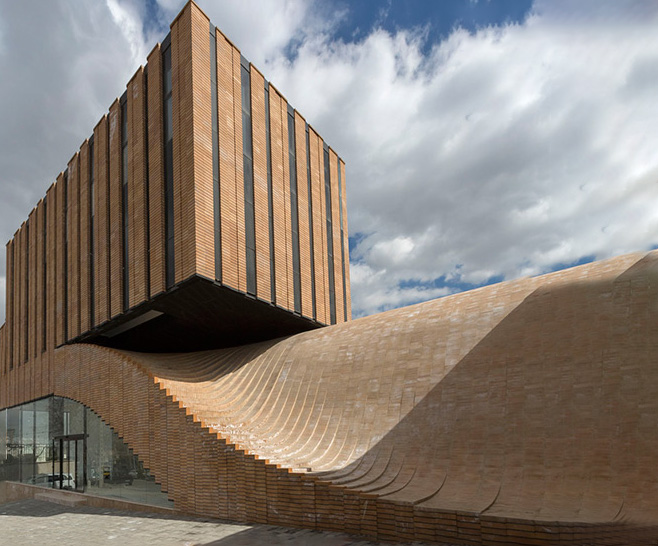

Due to an increase in the world’s population, modern architecture focused on simple houses with simple yet beautiful and elegant materials. Modern Architecture Art formed at the end of the 19th century and was welcomed by people because the increase in population in this decade was more noticeable and important than before. Dubai architecture, especially the Khalifa Tower, are examples of modern architecture in the present era. This article introduces modern architecture and discusses its influence on Iranian architecture.
What are the characteristics of modern architecture?
Modern architecture argued to preserve appearance and beauty alongside providing housing for more people. After the World War, people felt the need and popularity of modern architecture more than before. The post-war people demanded a new form of settlement in order to forget the hardships and problems of wartime. On the other hand, architects and city planners took advantage of the destroyed places to choose a new plan for construction.
During these years, places such as churches and related places lost their significance in the tradition. These places used to be the most suitable option for the best architecture due to the highly allocated budget and time on their construction. However, such places lost their significance and more focus was placed on people’s residences. This gained acceptance by people because it was defined in the framework of democracy.
This was beneficial to both the people and the governments because the extravagances of traditional architecture such as interior and exterior decorations and details disappeared while people’s satisfaction of living in multi-story buildings with unique architecture increased. The basic materials used in modern architecture are concrete, simple glass, and steel, which have a lower price compared to traditional architecture and its expensive stones and detailed paintings. Modern architects believe that each era should bear its own form. This gave modern architecture a scientific, dynamic, and technical attitude.
Modern Architecture in Iran
Modern architecture in Iran falls into three main categories:
• Qajar (Naseri period)
• Pahlavi
• Islamic Republic
1. Modern architecture in the Qajar period
During this era, Qajar rulers and nobles gradually became familiar with European architecture and culture through traveling to Europe or viewing postcards, photographs or reading travelogues. Since the Qajars were very interested in European culture, they tried to establish this culture in Iran. However, they knew changing a tradition is not an easy and short-term goal. Therefore, firstly they decided to imitate appearances and make them European. This attitude and imitation damaged the culture because the modern architecture in Europe formed based on reasons and causes, but the Iranians used it widely just out of emotion and the love of foreignness of modern architecture.
Momtahen-al-Douleh was the first architect who studied in Europe and came to Iran in the 1243 Shamsi Calendar. His important artworks are Sepahsalar School (Shahid Motahari School) and the National Assembly. Although he could not revolutionize Iranian architecture, he played an influential role in introducing modern architecture in Iran. Some important and famous building of the Qajar period is the Shams-Al-Emareh mansion, a combination of Iranian and European architecture.
2. Modern architecture in the Pahlavi period
Reza Shah’s activities
Modernity and its introduction to Iran were very important to Reza Shah. Therefore, he initiated a change in Iranian architecture by inviting European architects and encouraging Iranians to study in Europe. At that time, Iranian architects got acquainted with new and cheaper materials such as concrete. Concrete brought new possibilities for Iranian architects in terms of structure, beauty, and saving time and money.
These materials replaced clay and straw because of their simplicity and beauty and became very popular because they were more useful than traditional materials. The arrival of these materials was accompanied by the arrival of foreign architects to Iran to teach them how to work with them. European architects made a great influence on Iranian architects and their mindset and work. Since working with these imported materials was easy, Iranian architects sought to create creative forms to make these materials look beautiful. The Shams Palace is one example of Pahlavi period architecture.
The University of Fine Arts
Faculty of Fine Arts established in 1319 at Tehran University. At first, it had three courses, one of which was architecture and its professors had studied in Europe. The establishment of this university and the presence of such professors was the most influential factor in the evolution of Iranian architecture, establishing modern architecture and understanding the principles and rules of it in Iran. At that time, Iranian architects and students regularly and continuously studied lessons about the formal techniques of modern architecture and its principles, content, and thoughts. This factor gave the students the opportunity to use their creativity. Gradually, this architectural style became popular in Iran.
Modern architecture after the Islamic Revolution
After the Islamic Revolution in Iran, an increase in the number of educated people in architecture as well as the arrival of global media made architects familiar with all kinds of related materials and experience and used this information more than before. The main goal of Iranian architects in the past two decades has been careful architecture based on historical and cultural heritage and traditional Iranian architecture. Although private sector architects may have done this reversely, buildings built under the supervision of the government have done so. The classical postmodernism movement caused these architects to create a more Iranian face and form in contemporary Iranian architecture. This style and performance have also been supported by the government. The name chosen by the government for the trend is Iranian-Islamic architecture and its manifestation is usually seen in governmental buildings. Reconciling and integrating tradition and modern architecture has always been the main focus of Iranian architects after the revolution.
